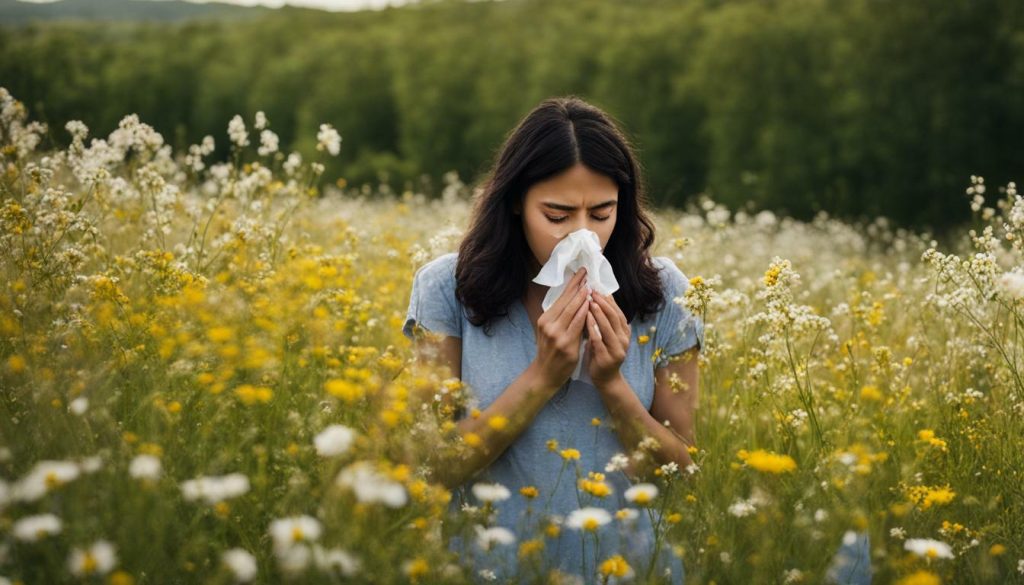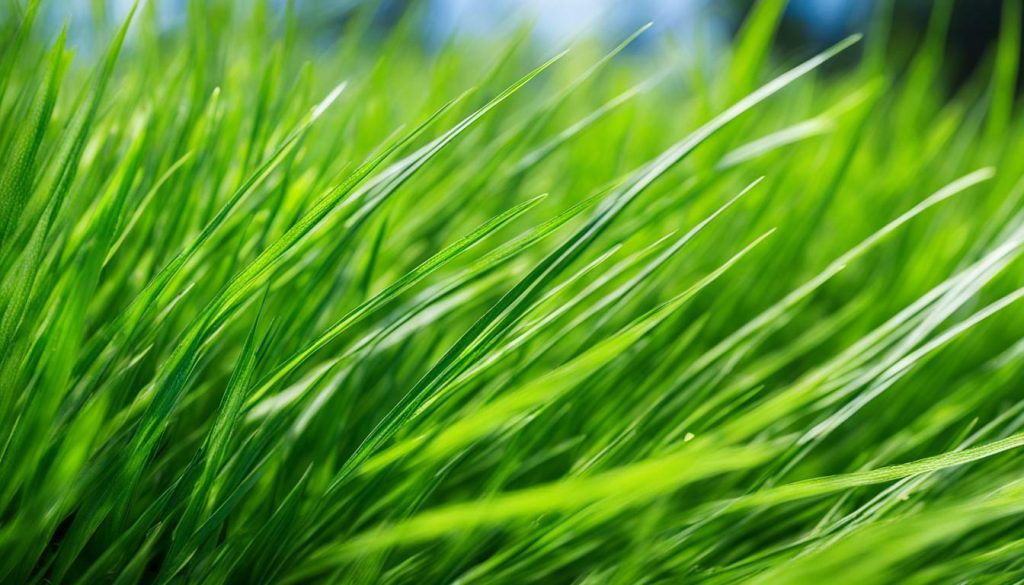Allergy season in America can vary depending on the region and the specific allergens. Spring allergies, including tree pollen, can start as early as February and last until early summer. Grass allergy season lasts throughout the summer, while fall allergies, mainly caused by ragweed, begin in August and can last until the first snowfall. However, there are exceptions to these timelines, such as tropical climates where grass allergies may persist year-round. Climate change has also affected allergy seasons, causing them to arrive earlier and contain more pollen. It’s recommended to start allergy treatment a few weeks before the season begins and not to stop medications too early. Allergy symptoms can be severe for asthma sufferers, so it’s important to see a specialist for a proper diagnosis and a treatment plan. Various medications, including nasal sprays and antihistamines, can help alleviate allergy symptoms. It’s essential to identify your specific allergens, reduce exposure to pollen, and mold-proof your home. Tracking pollen counts, cleaning regularly, and changing clothes can also help manage allergies during the season. Additionally, seeking assessment from an allergist, finding the right medications, and practicing avoidance strategies can effectively manage allergies.
- Allergy season in America varies depending on the region and specific allergens.
- Spring allergies, including tree pollen, typically start in February and end in early summer.
- Grass allergy season occurs throughout the summer months.
- Fall allergies, caused by ragweed, start in August and can last until the first snowfall.
- Tropical climates may have grass allergies persist year-round.
- Climate change has affected allergy seasons, causing earlier and more pollen-filled seasons.
- Starting allergy treatment before the season begins and not stopping medications too early is recommended.
- Asthma sufferers should seek a specialist for proper diagnosis and treatment.
- Various medications, such as nasal sprays and antihistamines, can help alleviate allergy symptoms.
- Identifying specific allergens, reducing pollen exposure, and mold-proofing your home are important.
Understanding Spring Allergies – When Does Pollen Season Begin?
Spring allergies, including tree pollen, can start as early as February and last until early summer. As the weather begins to warm up and plants start to bloom, pollen levels increase, triggering allergic reactions in susceptible individuals. Common symptoms of spring allergies include sneezing, itchy and watery eyes, runny nose, and nasal congestion.

To effectively manage spring allergies, it’s important to understand when the pollen season begins and take proactive measures to alleviate symptoms. Tracking local pollen counts can help you anticipate peak allergen levels and plan accordingly. This information is readily available through online resources and local weather reports.
Additionally, minimizing exposure to pollen can significantly reduce allergy symptoms. Consider keeping windows closed during high pollen days and using air purifiers with HEPA filters to remove allergens from indoor air. Changing clothes and showering after spending time outdoors can also help eliminate pollen from your body and prevent it from spreading to your living spaces.
If over-the-counter allergy medications provide insufficient relief, it may be time to consult with a healthcare professional. An allergist can conduct tests to identify specific allergens and develop a personalized treatment plan. This may include prescription medications, immunotherapy, or recommendations for avoiding or minimizing exposure to allergens.
Table: Common Spring Allergens
| Allergen | Main Source |
|---|---|
| Tree Pollen | Flowering trees such as oak, birch, cedar |
| Grass Pollen | Various types of grasses |
| Weed Pollen | Ragweed, lamb’s quarters, pigweed |
| Mold Spores | Damp and humid areas, such as basements and bathrooms |
By understanding when pollen season begins and taking appropriate measures to manage allergies, you can ensure a more comfortable and symptom-free spring season.
Managing Summer Allergies – The Impact of Grass Allergy Season
Grass allergy season lasts throughout the summer, causing discomfort for many individuals. As the grass pollinates, it releases tiny particles into the air that can trigger allergic reactions in susceptible people. Common symptoms of grass allergies include sneezing, itchy and watery eyes, runny nose, and congestion.

To effectively manage summer allergies, prevention is key. Avoiding exposure to grass pollen is crucial, especially during peak pollen hours in the early morning and late afternoon. If you need to be outdoors, consider wearing sunglasses to shield your eyes and a pollen mask to filter the air you breathe.
| Allergy Prevention Tips for Grass Allergy Season: |
|---|
| Keep windows closed to prevent pollen from entering your home |
| Remove shoes and change clothes when coming indoors to minimize pollen transfer |
| Limit outdoor activities, particularly on dry and windy days when pollen counts are higher |
| Consider using air purifiers with HEPA filters to remove pollen particles from indoor air |
| Regularly clean your house to reduce the buildup of allergens |
For individuals with severe grass allergies, over-the-counter antihistamines or nasal sprays may provide temporary relief. However, it is recommended to consult with an allergist to develop a personalized treatment plan. Allergy shots (immunotherapy) can offer long-term relief by gradually desensitizing your immune system to grass pollen.
Remember, there is no one-size-fits-all approach to managing summer allergies. Identifying your specific triggers and working closely with a healthcare professional will help ensure effective symptom management and a more enjoyable summer season.
Fall Allergies – Dealing with the Onset of Ragweed
Fall allergies, mainly caused by ragweed, begin in August and can last until the first snowfall. Ragweed pollen is a common allergen that affects millions of Americans each year. The pollen grains are lightweight and can travel long distances, making it difficult to escape their reach. If you are one of the many people who suffer from ragweed allergies, it’s essential to take proactive steps to manage your symptoms and minimize exposure.
One of the first steps in managing fall allergies is to stay informed about the pollen count in your area. Tracking the daily pollen count can help you plan your activities and take precautions when the levels are high. There are several resources available online that provide up-to-date pollen information for different regions.

In addition to tracking pollen counts, there are other measures you can take to reduce your exposure to ragweed pollen. Changing clothes and showering after spending time outdoors can help remove any lingering pollen from your body and hair. It’s also important to keep windows closed during peak pollen times and use air purifiers or filters to improve indoor air quality.
Table: Common Symptoms of Ragweed Allergies
| Symptom | Description |
|---|---|
| Nasal congestion | Stuffy or blocked nose due to inflammation |
| Sneezing | Repeated, uncontrollable sneezes |
| Itchy, watery eyes | Redness, itching, and excessive tearing |
| Runny nose | Clear or watery discharge from the nasal passages |
| Postnasal drip | Mucus dripping down the back of the throat |
If over-the-counter allergy medications are not providing sufficient relief, it may be beneficial to consult with an allergist. They can assess your symptoms, perform allergy testing, and recommend suitable prescription medications or immunotherapy options. Seeking professional help can help you find the right treatment plan to effectively manage your fall allergies.
Remember, while fall allergies can be bothersome, proactive management and appropriate treatment can help alleviate symptoms and improve your quality of life during this time of the year.
Exceptions to Allergy Timelines – Unique Factors to Consider
While there are general timelines for allergy seasons, certain factors, like tropical climates and climate change, can create exceptions. In tropical regions, grass allergies may persist year-round due to the favorable climate conditions. The warm temperatures and high humidity provide an ideal environment for grass pollen to thrive, causing continuous allergic reactions for individuals living in these areas.
Climate change has also had a significant impact on allergy seasons. Rising temperatures and changes in precipitation patterns have caused plants to produce more pollen and for longer periods. Additionally, the increased levels of carbon dioxide in the atmosphere have led to the growth of stronger and more allergenic plants. As a result, allergy seasons have become more intense and have started earlier, affecting a larger number of people.
Some studies have shown that pollen counts in the United States have increased by up to 20% in recent years due to climate change. This has resulted in more severe and prolonged allergy seasons, making it even more important for individuals to take proactive measures to manage their allergies.
Understanding these exceptions and how they can impact allergy seasons is crucial for individuals who suffer from year-round allergies or live in tropical climates. By being aware of these unique factors, individuals can better prepare for the challenges posed by allergies and develop personalized strategies to alleviate symptoms and reduce exposure to allergens.

- Tropical climates can cause grass allergies to persist year-round, due to favorable climate conditions.
- Climate change has led to more intense and prolonged allergy seasons, with increased pollen production and earlier onset.
- Increased carbon dioxide levels have resulted in the growth of stronger and more allergenic plants.
- Individuals should be aware of these exceptions and take proactive measures to manage their allergies.
| Exception | Impact |
|---|---|
| Tropical Climates | Year-round grass allergies |
| Climate Change | Intense and prolonged allergy seasons, increased pollen production |
The Importance of Early Allergy Treatment and Proper Diagnosis
It is recommended to start allergy treatment a few weeks before the season begins and not to stop medications too early to effectively manage allergy symptoms. Allergies can cause a range of symptoms, including sneezing, runny nose, itchy and watery eyes, and even difficulty breathing. For individuals with asthma, allergies can trigger asthma attacks, leading to more severe respiratory symptoms. Seeking early treatment and a proper diagnosis is crucial for managing allergies and preventing complications.
“Allergies can have a significant impact on a person’s quality of life, affecting their ability to work, study, and enjoy everyday activities,” says Dr. Smith, an allergy specialist. “By starting treatment early, we can help individuals reduce their symptoms and improve their overall well-being.”
When it comes to allergy treatment, there are various options available, including over-the-counter medications and prescription drugs. Nasal sprays and antihistamines are commonly used to provide relief from allergy symptoms. Nasal sprays work by reducing inflammation in the nasal passages, while antihistamines block the action of histamine, a chemical produced by the body in response to allergens.
To effectively manage allergies, it’s important to identify the specific allergens that trigger your symptoms. This can be done through allergy testing conducted by an allergist. Once the allergens are identified, you can take steps to reduce your exposure to them. This may include avoiding outdoor activities during peak pollen times, using air purifiers in your home, and regularly cleaning and vacuuming to minimize allergen buildup.
Creating an Allergy-Friendly Environment at Home
Making a few changes to your home environment can greatly reduce your exposure to allergens. Mold is a common allergen that thrives in damp environments, so it’s essential to mold-proof your home. This can be done by fixing any leaks or water damage, using dehumidifiers in high-moisture areas, and regularly cleaning areas prone to mold growth, such as bathrooms and basements.
Additionally, keeping your home clean is crucial in minimizing allergen accumulation. Regularly dusting surfaces, vacuuming carpets, and washing bedding can help remove allergens like dust mites and pet dander. Using allergen-proof covers on mattresses and pillows can also provide added protection.
| Allergy-Friendly Tips | Allergen Prevention Methods |
|---|---|
| Keep windows closed during high pollen times | Minimize exposure to outdoor allergens |
| Remove shoes when entering the house | Prevent tracking allergens indoors |
| Wash hands frequently | Remove allergens from hands |
| Wash bedding in hot water weekly | Remove dust mites and allergens |

Managing allergies requires a multi-faceted approach that includes early treatment, proper diagnosis, medication, and environmental modifications. By taking proactive steps to manage allergies, you can minimize symptoms, improve your quality of life, and enjoy the outdoors without discomfort. If you’re experiencing allergy symptoms, it’s always a good idea to consult with an allergist who can provide expert guidance and develop a personalized treatment plan to meet your specific needs.
Alleviating Allergy Symptoms – Understanding Medication Options
Various medications, including nasal sprays and antihistamines, can help alleviate allergy symptoms. Nasal sprays work by reducing inflammation in the nasal passages, relieving congestion, and reducing sneezing and itching. They are often recommended for people with allergic rhinitis, as they target symptoms directly in the nasal area. Antihistamines, on the other hand, block the action of histamines, which are chemicals released during an allergic reaction. They are effective in reducing sneezing, itching, and runny nose.
If you prefer nasal sprays, there are different types available, including saline sprays that help rinse away allergens and clear the nasal passages. There are also corticosteroid sprays that provide long-term relief by reducing inflammation. It’s important to follow the instructions and dosage recommendations provided by your healthcare provider or the medication packaging.
When it comes to antihistamines, they can be found in both over-the-counter and prescription forms. Over-the-counter antihistamines are readily available and can provide relief from mild allergy symptoms. They are generally non-drowsy, making them suitable for daytime use. However, if your symptoms are severe or persistent, your healthcare provider may prescribe stronger antihistamines. It’s essential to read the labels carefully and take the medications as directed.

In addition to nasal sprays and antihistamines, other allergy medications may be recommended based on your specific symptoms and medical history. These may include decongestants to relieve nasal congestion, eye drops to alleviate itchy and red eyes, and corticosteroid creams or ointments for skin allergies. Always consult with a healthcare professional before starting any new medication, especially if you have other medical conditions or take other medications.
Table: Comparison of Common Medications for Allergy Relief
| Medication | Benefits | Possible Side Effects |
|---|---|---|
| Nasal Sprays | – Relieves nasal congestion – Reduces inflammation – Clears nasal passages |
– Dryness or irritation in the nose – Nosebleeds (with corticosteroid sprays) |
| Antihistamines | – Reduces sneezing – Alleviates itching – Controls runny nose |
– Drowsiness (some types) – Dry mouth or eyes – Headache |
| Decongestants | – Relieves nasal congestion – Shrinks swollen blood vessels |
– Increased heart rate – Elevated blood pressure – Nervousness or irritability |
Remember, while medications can provide relief from allergy symptoms, it’s important to address the root cause of your allergies and consider other management strategies. Identifying your specific allergens and taking steps to reduce exposure, such as keeping windows closed during peak pollen times and using air purifiers, can complement medication use and help manage your allergies more effectively.
Identifying Allergens and Reducing Exposure to Pollen
It is essential to identify your specific allergens and take steps to reduce exposure to pollen. By understanding what triggers your allergies, you can better prepare yourself and minimize the impact on your daily life. Here are some strategies to help you in this process:
- Consult an allergist: An allergist can perform tests to identify specific allergens that affect you. These tests may include skin prick tests or blood tests. Knowing your allergens can guide you in developing an effective management plan.
- Keep track of pollen counts: Stay informed about the local pollen counts to anticipate high pollen days. Use online resources or weather apps that provide pollen forecasts and plan your outdoor activities accordingly.
- Minimize outdoor exposure: On days with high pollen counts, try to stay indoors, especially during peak pollen times like early mornings and windy days. Keep windows closed and use air purifiers or HEPA filters to reduce pollen levels indoors.
- Practice good hygiene: Pollen can easily stick to clothing and hair, so changing clothes and showering after spending time outdoors can help remove pollen particles and reduce exposure.
- Create a pollen-free environment: Consider designating certain areas in your home as pollen-free zones, such as bedrooms. Keep these areas clean, vacuum regularly, and use hypoallergenic bedding to prevent pollen from settling.
Reducing exposure to pollen is crucial for managing allergies effectively. By identifying your specific allergens and following these strategies, you can minimize the impact of pollen on your daily life and enjoy a symptom-free season.

Reducing pollen exposure can significantly alleviate allergy symptoms and improve your quality of life during allergy season. By taking proactive measures to minimize your contact with pollen, you can experience the following benefits:
- Reduced allergy symptoms: By reducing exposure to pollen, you can minimize the severity and frequency of allergy symptoms such as sneezing, nasal congestion, itchy eyes, and throat irritation.
- Improved sleep: By creating a pollen-free environment in your bedroom, you can enjoy better quality sleep without constant disruptions from allergy symptoms.
- Enhanced productivity: Managing your allergies effectively allows you to stay focused and productive, as you won’t be constantly battling symptoms that affect your concentration and energy levels.
- Better overall well-being: Alleviating allergy symptoms can improve your overall well-being, both physically and mentally, allowing you to engage in activities and enjoy the outdoors without the constant discomfort of allergies.
Remember, reducing exposure to pollen is just one part of managing allergies. It’s essential to work closely with an allergist and consider other treatment options to find the best approach for your specific needs. With proper identification of allergens and the implementation of pollen-reducing strategies, you can minimize the impact of allergies and lead a more comfortable, symptom-free life.
| Common Allergens | Symptoms |
|---|---|
| Tree pollen | Sneezing, runny nose, itchy eyes |
| Grass pollen | Nasal congestion, watery eyes, coughing |
| Ragweed pollen | Sneezing, itchy throat, fatigue |
Creating an Allergy-Friendly Environment at Home
Creating an allergy-friendly environment at home is crucial for managing allergies during the season. By taking proactive steps to reduce allergens and minimize exposure, you can significantly alleviate allergy symptoms and enjoy a more comfortable living space. Let’s explore some practical strategies to mold-proof your home and maintain cleanliness regularly.
Mold-Proof Your Home
Mold is a common allergen that can trigger respiratory symptoms and worsen allergies. To minimize the presence of mold in your home, it’s important to identify and address areas of excess moisture. Repair any leaks or water damage promptly, and ensure proper ventilation in humid areas such as bathrooms and basements. Regularly clean and dry damp surfaces, and consider using a dehumidifier to control humidity levels.
Cleaning Regularly
Regular cleaning plays a crucial role in reducing allergens indoors. Dusting surfaces, vacuuming carpets and rugs, and washing bedding frequently can help remove dust mites, pet dander, and pollen. Use a vacuum cleaner with a high-efficiency particulate air (HEPA) filter to effectively capture and trap allergens. Additionally, consider using allergen-proof pillow and mattress covers to protect against dust mites.
| Allergy-Friendly Cleaning Tips: |
|---|
| Use fragrance-free and hypoallergenic cleaning products to avoid triggering allergies. |
| Remove clutter, as it can accumulate dust and make cleaning more challenging. |
| Wipe down hard surfaces with a damp cloth to prevent allergens from becoming airborne. |
Remember to pay attention to areas that are often overlooked, such as curtains, blinds, and air vents. Regularly wash or replace air filters in your heating and cooling systems to maintain clean indoor air quality.

By creating an allergy-friendly environment at home, you can significantly reduce allergens and create a sanctuary where you can breathe easier. Implementing these strategies and taking proactive measures to minimize allergens will help you manage allergies more effectively and enjoy a symptom-free living space.
Managing Allergies – Tracking Pollen Counts and Changing Clothes
Tracking pollen counts and changing clothes can play a significant role in managing allergies during the season. By staying informed about pollen levels in your area, you can better prepare yourself and take necessary precautions to minimize exposure. Websites and mobile apps offer real-time updates on current pollen counts, allowing you to plan outdoor activities accordingly. When levels are high, it’s advisable to limit your time outdoors, especially during peak pollen hours.
Changing clothes regularly is another effective strategy to reduce allergen exposure. Pollen can easily cling to your clothing, hair, and skin, making it important to change into clean clothes after spending time outside. To further minimize pollen transfer, consider removing your shoes at the entrance of your home and taking a quick shower to wash away any residual allergens. These simple habits can go a long way in alleviating allergy symptoms.
To illustrate the impact of tracking pollen counts and changing clothes, let’s take a look at the following table:
| Date | Pollen Count |
|---|---|
| April 1 | High |
| April 2 | Medium |
| April 3 | Low |
Based on the table above, if you know that the pollen count is high on April 1, you can plan indoor activities or take extra precautions when going outside. On days with low or medium pollen counts, you may feel more at ease and can safely enjoy outdoor activities. By being aware of pollen levels and adapting your routine accordingly, you can minimize the impact of allergens on your well-being.
![]()
In summary, tracking pollen counts and changing clothes are practical strategies for managing allergies. Stay updated on pollen levels, change clothes regularly, and take showers to remove allergens from your body. These small habits can help you stay comfortable and symptom-free throughout the allergy season.
Seeking Professional Help – Allergist Assessment and Medication
Seeking professional help from an allergist is crucial for a proper diagnosis and finding the right medications to manage allergies. Allergists are specially trained physicians who specialize in diagnosing and treating allergies, asthma, and other immune system disorders. They have the expertise to identify the specific allergens that may be causing your symptoms and develop a personalized treatment plan to help you find relief.
An allergist assessment typically involves a comprehensive evaluation of your medical history, allergy symptoms, and a physical examination. The allergist may also conduct diagnostic tests, such as skin tests or blood tests, to determine which allergens you are allergic to. These tests can provide valuable insights into the triggers that are causing your allergic reactions.
Once the allergist has identified your specific allergens, they can recommend the right medications to manage your allergies effectively. These medications may include antihistamines, nasal sprays, or allergy shots. Antihistamines help to relieve common allergy symptoms, such as sneezing, itching, and runny nose, while nasal sprays can reduce inflammation in the nasal passages. Allergy shots, also known as immunotherapy, can provide long-term relief by desensitizing your immune system to specific allergens.

It’s important to follow the allergist’s recommendations for medication usage and any lifestyle modifications that may be necessary to manage your allergies effectively. The allergist can provide guidance on how to minimize your exposure to allergens, such as pollen, dust mites, or pet dander, which can help reduce the frequency and severity of your allergic reactions. They may also offer advice on creating an allergy-friendly environment at home and provide resources for tracking pollen counts and other relevant information.
By seeking professional help from an allergist, you can gain a better understanding of your allergies and receive the appropriate treatment to manage your symptoms. With the right diagnosis and medications, you can find relief from your allergies and enjoy a better quality of life.
Conclusion
Effectively managing allergies through proper treatment and prevention strategies can help individuals stay symptom-free and enjoy a better quality of life. By understanding the timing of allergy seasons in America, we can prepare ourselves to minimize the impact of allergies.
Spring allergies, characterized by tree pollen, usually begin in February and last until early summer. Grass allergy season follows during the summer months, while fall allergies, triggered by ragweed, emerge in August and can persist until the first snowfall. It’s crucial to note that these timelines can vary depending on the region and specific allergens.
Exceptions to the usual allergy timelines exist, especially in tropical climates where grass allergies may persist year-round. Additionally, climate change has disrupted allergy seasons, causing them to arrive earlier and contain more pollen. Awareness of these exceptions can help individuals better understand and manage their allergies.
Seeking early treatment and a proper diagnosis from an allergist is vital, particularly for individuals with asthma. Allergy specialists can develop personalized treatment plans to alleviate symptoms and minimize the impact of allergies on daily life. Medications such as nasal sprays and antihistamines can help provide relief, but it’s important to start treatment a few weeks before the season begins and to continue taking medication as prescribed.
Prevention strategies play a significant role in managing allergies. It is essential to identify specific allergens and take steps to reduce exposure to pollen. This can be achieved by tracking pollen counts, changing clothes after spending time outdoors, and creating an allergy-friendly environment at home by regularly cleaning and mold-proofing.
In conclusion, effectively managing allergies requires a proactive approach. By understanding the timing of allergy seasons, seeking professional help, utilizing appropriate medications, and implementing prevention strategies, individuals can minimize symptoms, remain allergy-free, and enjoy a better quality of life.
FAQ
When does allergy season typically occur in America?
Allergy season in America can vary depending on the region and the specific allergens. Spring allergies, including tree pollen, can start as early as February and last until early summer. Grass allergy season lasts throughout the summer, while fall allergies, mainly caused by ragweed, begin in August and can last until the first snowfall.
Are there any exceptions to the usual allergy season timelines?
Yes, there are exceptions to the usual allergy season timelines. In tropical climates, grass allergies may persist year-round. Additionally, climate change has affected allergy seasons, causing them to arrive earlier and contain more pollen.
How early should I start allergy treatment?
It is recommended to start allergy treatment a few weeks before the season begins. This can help alleviate symptoms and prevent severe allergic reactions.
Can I stop taking allergy medications once the season is over?
It is important not to stop taking allergy medications too early. Allergy symptoms can persist even after the peak season is over, and stopping medications prematurely can lead to a relapse of symptoms.
What are some common medications for allergies?
Common medications for allergies include nasal sprays and antihistamines. Nasal sprays can help reduce inflammation in the nasal passages, while antihistamines can block the effects of histamine, a chemical released during an allergic reaction.
How can I reduce exposure to allergens?
To reduce exposure to allergens, it is important to identify your specific allergens and take measures to minimize their impact. This can include keeping windows closed, using air purifiers, and avoiding outdoor activities during peak pollen times.
What can I do to create an allergy-friendly environment at home?
To create an allergy-friendly environment at home, you can mold-proof your home by fixing leaks and reducing humidity. Regular cleaning, especially of carpets and bedding, can also help remove allergens. Additionally, using allergen-proof covers on pillows and mattresses can prevent exposure to dust mites.
How can I track pollen counts?
There are various resources available to track pollen counts, such as weather websites and mobile apps. Monitoring pollen counts can help you plan outdoor activities accordingly and take appropriate precautions.
When should I seek professional help for allergies?
If you are experiencing severe allergy symptoms or have asthma, it is important to seek assessment from an allergist. They can provide a proper diagnosis and develop a personalized treatment plan to effectively manage your allergies.
What is the importance of managing allergies?
Managing allergies is crucial to finding relief from symptoms and staying symptom-free. It can significantly improve your quality of life and prevent potential complications, especially for individuals with asthma who may experience severe allergic reactions.




